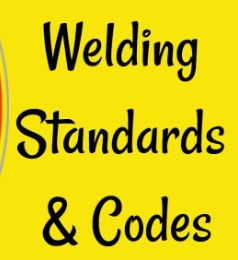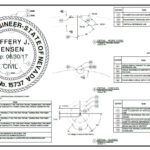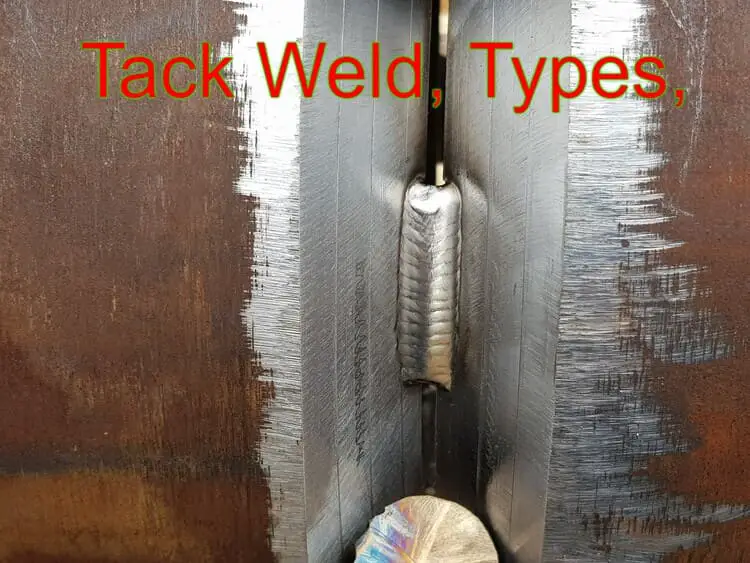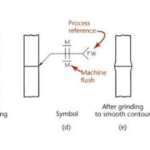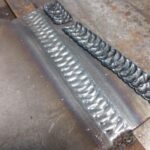Welding Codes & Standards
Welding is a critical process in various industries, and maintaining quality and safety standards is of utmost importance. Welding codes and standards play a vital role in achieving these objectives.
They provide guidelines and requirements for welding procedures, qualifications, inspections, and quality control.
Lets see the worldwide used Welding Codes & Standards…
AWS Welding Codes
The American Welding Society (AWS) is a renowned organization that develops and publishes welding codes and standards to promote safe and high-quality welding practices. These codes provide guidelines for various aspects of welding, including materials, procedures, qualifications, and inspections.
The American Welding Society (AWS) is a well-respected institution committed to advancing welding practices and ensuring their safety and quality. AWS develops and publishes a range of welding codes and standards that serve as valuable guidelines for different aspects of welding.
These codes cover essential areas such as materials, procedures, qualifications, and inspections. Let’s take a closer look at some notable AWS welding codes:
Let’s explore some of the key AWS welding codes:
AWS Codes D Series
The AWS D series codes refer to a set of welding codes developed by the American Welding Society (AWS) specifically for structural welding applications. These codes provide guidelines and requirements for welding procedures, qualifications, materials, inspections, and other aspects related to structural welding.
The D series codes cover various materials and structures commonly encountered in the construction industry. Let’s explore the key AWS D series codes:
| AWS D1.1 | Structural welding (steel) |
| AWS D1.2 | Structural welding (aluminum) |
| AWS D1.3 | Structural welding (sheet steel) |
| AWS D1.4 | Structural welding (reinforcing steel) |
| AWS D1.5 | Bridge welding |
| AWS D1.6 | Structural welding (stainless steel) |
| AWS D1.7 | Structural welding (strengthening and repair) |
| AWS D1.8 | Structural welding seismic supplement |
| AWS D1.9 | Structural welding (titanium) |
| AWS D3.6R | Underwater welding (Offshore & inland pipelines) |
| AWS D8.1 | Automotive spot welding |
| AWS D8.6 | Automotive spot welding electrodes supplement |
| AWS D8.7 | Automotive spot welding recommendations supplement |
| AWS D8.8 | Automotive arc welding (steel) |
| AWS D8.9 | Automotive spot weld testing |
| AWS D8.14 | Automotive arc welding (aluminum) |
| AWS D9.1 | Sheet metal welding |
| AWS D10.10 | Heating practices for pipe and tube |
| AWS D10.11 | Root pass welding for pipe |
| AWS D10.12 | Pipe welding (mild steel) |
| AWS D10.13 | Tube brazing (copper) |
| AWS D10.18 | Pipe welding (stainless steel) |
| AWS D11.2 | Welding (cast iron) |
| AWS D14.1 | Industrial mill crane welding |
| AWS D14.3 | Earthmoving & agricultural equipment welding |
| AWS D14.4 | Machinery joint welding |
| AWS D14.5 | Press welding |
| AWS D14.6 | Rotating Elements of Equipment |
| AWS D14.9 | Specification for the Welding of Hydraulic Cylinders |
| AWS D15.1 | Railroad welding |
| AWS D15.2 | Railroad welding practice supplement |
| AWS D16.1 | Robotic arc welding safety |
| AWS D16.2 | Robotic arc welding system installation |
| AWS D16.3 | Robotic arc welding risk assessment |
| AWS D16.4 | Robotic arc welder operator qualification |
| AWS D17.1 | Aerospace fusion welding |
| AWS D17.2 | Aerospace resistance welding |
| AWS D17.3 | Aerospace friction stir welding (aluminum) |
| AWS D18.1 | Hygienic tube welding (stainless steel) |
| AWS D18.2 | Stainless steel tube discoloration guide |
| AWS D18.3 | Hygienic equipment welding |
AWS A- Series
AWS A-Series covers a range of specifications within the American Welding Society (AWS) related to filler metals, electrodes, and gases used in welding processes.
The AWS A-Series includes various codes numbered AWS A5.1 to AWS A5.36, each specifying requirements for different types of welding consumables.
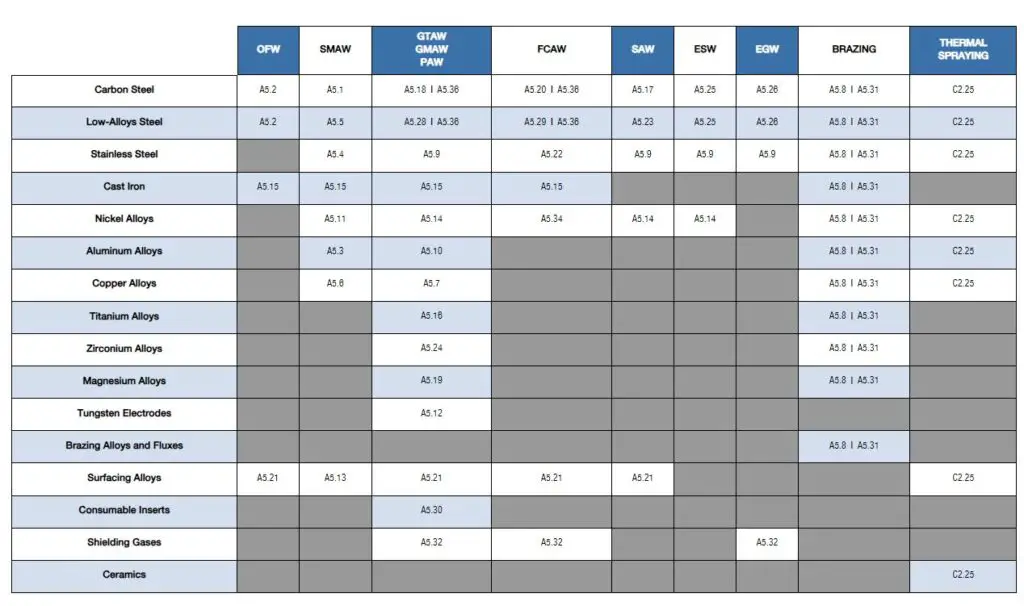
AWS C- Series
- AWS C1.1– Recommended Practice for Resistance Welding
- AWS C1.2– Recommended Practice for Spot Welding Aluminum & alloys
- AWS C1.3 Recommended Practices for Resistance Welding Coated Low Carbon Steels
- AWS C1.4 Specification for Resistance Welding of Carbon and Low-Alloy Steels
- AWS C1.5 Specification for the Qualification of Resistance Welding Technicians
- AWS C2.2 Recommended Practices for Metallizing with Aluminium and Zinc for Protection of Iron and Steel
- AWS C2.16 Guide for Thermal Spray Operator Qualification Programs
- AWS C3.4 Specification for Torch Brazing
- AWS C3.5 Specification for Induction Brazing
- AWS C3.6 Specification for Furnace Brazing
AWS C3.7 Specification for Aluminum Brazing - AWS C4.2 Recommended Practices for Oxyfuel Gas Cutting Torch Operation
- AWS C4.3 Recommended Practices for Oxyfuel Gas Heating Torch Operation
- AWS C4.4 Recommended Practices for Heat Shaping and Straightening with Oxyfuel Gas Heating Torches
- AWS C5.1 Recommended Practices for Plasma-Arc Welding
- AWS C5.2 Recommended Practices for Plasma Arc Cutting and Gouging
- AWS 5.3 Recommended Practices for Air Carbon Arc Gouging and Cutting
- AWS C5.4 RECOMMENDED PRACTICES FOR STUD WELDING
- AWS C5.5 Recommended Practices for Gas Tungsten Arc Welding
- AWS C5.6 Recommended Practices for Gas Metal Arc Welding
- AWS C5.7 Recommended Practices for Electrogas Welding
ASME Welding Codes
The American Society of Mechanical Engineers (ASME) has developed a range of welding codes that provide guidelines and requirements for various aspects of welding processes. These codes ensure the quality, safety, and integrity of welded components in different industries.
Let’s explore some of the key ASME welding codes:
| ASME BPVC Section I | Rules for Construction of Power Boilers |
| ASME BPVC Section II | Part C: Specifications for Welding Rods, Electrodes and Filler Metals. |
| ASME BPVC Section III | Rules for Constructions of Nuclear Facility Components-Subsection NCA-General Requirements for Division 1 and Division 2 |
| ASME BPVC Section IV | Rules for Construction of Heating Boilers |
| ASME BPVC Section V | Nondestructive Examination |
| ASME BPVC Section VIII | Rules for Construction of Pressure Vessels Division 1 and Division 2 |
| ASME BPVC Section IX | Welding and Brazing Qualifications |
| ASME B16.25 | Buttwelding ends |
| ASME B31.1 | Power Piping |
| ASME B31.3 | Process Piping |
| ASME B31.9 | Building Services Piping |
API Welding Codes and Standards
The American Petroleum Institute (API) has developed a comprehensive set of welding codes and standards specifically for the oil and gas industry. These codes and standards provide guidelines and requirements for welding processes, materials, and inspections to ensure the integrity and safety of equipment and structures used in the industry.
Let’s explore some of the key API welding codes and standards:
- API 1104: Welding of Pipelines and Related Facilities
- API 650: Standard for Welded Tanks for Oil Storage Tanks
- API 620: Design and Construction of Large, Welded, Low-Pressure Storage Tanks
- API 577: Welding Processes, Inspection, and Metallurgy
- API RP 2201- Safe Hot Tapping Practices in the Petroleum and Petrochemical Industries
- API 5L: Specification for Line Pipe
- API RP 2Z: Recommended Practice for Preproduction Qualification for Steel Plates for Offshore Structures
- API RP 1107– PIPELINE MAINTENANCE WELDING PRACTICES
- API RP 582: Welding Guidelines for the Chemical, Oil, and Gas Industries
- API RP 2009- Safe Welding, Cutting, and Hot Work Practices in the Petroleum and Petrochemical Industries
- API 942– Controlling Weld Hardness of Carbon Steel Refinery Equipment to Prevent Environmental Cracking
- API RP 571: Damage Mechanisms Affecting Fixed Equipment in the Refining Industry
- API RP 934-A: Materials and Fabrication of 2 1/4Cr-1Mo, 2 1/4Cr-1Mo-1/4V Steel Heavy Wall Pressure Vessels for High-Temperature, High-Pressure Hydrogen Service
- API RP 934-C: Materials and Fabrication of 11/4Cr-1/2Mo Steel Heavy Wall Pressure Vessels for High-pressure Hydrogen Service Operating at or Below 825 °F (440 °C)
- API RP 934-D: Technical Report on the Materials and Fabrication Issues of 11/4Cr-1/2Mo and 1Cr-1/2Mo Steel Pressure Vessels
- API RP 937: Evaluation of Design Criteria for Storage Tanks with Frangible Roof Joints
- API RP 941: Steels for Hydrogen Service at Elevated Temperatures and Pressures in Petroleum Refineries and Petrochemical Plants
- API TR 938-B– Use of 9Cr-1Mo-V (Grade 91) Steel in the Oil Refining Industry
- API SPEC 6A– Specification for Wellhead and Tree Equipment
AS/NZS Welding Standards
The AS/NZS (Australian/New Zealand Standards) welding standards are a set of codes and specifications that provide guidelines and requirements for welding processes, procedures, and quality control in Australia and New Zealand. These standards ensure the safety, reliability, and quality of welded components and structures.
| Standard Number | Description |
|---|---|
| AS/NZS 1554.1 | Structural steel welding – Welding of steel structures |
| AS/NZS 1554.2 | Structural steel welding – Stud welding (steel studs to steel) |
| AS/NZS 1554.3 | Structural steel welding – Welding of reinforcing steel |
| AS/NZS 1554.4 | Structural steel welding – Welding of high strength quenched and tempered steels |
| AS/NZS 1554.5 | Structural steel welding – Welding of steel structures subject to high levels of fatigue loading |
| AS/NZS 1554.6 | Structural steel welding – Welding stainless steels for structural purposes |
| AS/NZS 1554.7 | Structural steel welding – Welding of sheet steel structures |
| AS/NZS 3992 | Pressure equipment – Welding and brazing qualification |
| AS/NZS 4855 | Welding consumables – Covered electrodes for manual metal arc welding |
| AS 4041 | Pressure Piping |
Here are some examples of AS/NZS welding standards:
- AS/NZS 1554 Part 1: Structural Steel Welding – Welding of Steel Structures
- AS/NZS 1554 Part 2: Structural Steel Welding – Welding of Steel Structures: Aluminium Structures
- AS/NZS 2980: Qualification of Welders for Fusion Welding of Steels
- AS/NZS ISO 9606.1: Qualification Testing of Welders – Fusion Welding – Steels
- AS/NZS ISO 9606.2: Qualification Testing of Welders – Fusion Welding – Aluminum and Aluminum Alloys
- AS/NZS ISO 9606.3: Qualification Testing of Welders – Fusion Welding – Copper and Copper Alloys
- AS/NZS ISO 9606.4: Qualification Testing of Welders – Fusion Welding – Nickel and Nickel Alloys
- AS/NZS ISO 9606.5: Qualification Testing of Welders – Fusion Welding – Titanium and Titanium Alloys
- AS/NZS ISO 9606.6: Qualification Testing of Welders – Fusion Welding – Zirconium and Zirconium Alloys
- AS/NZS 3992: Pressure Equipment – Welding and Brazing Qualification
- AS/NZS 3992.1: Pressure Equipment – Welding and Brazing Qualification – Welders
- AS/NZS 3992.2: Pressure Equipment – Welding and Brazing Qualification – Welding Supervisors
- AS/NZS 3992.3: Pressure Equipment – Welding and Brazing Qualification – Welding Inspectors
- AS/NZS 3834: Quality Requirements for Fusion Welding of Metallic Materials
- AS/NZS 2982: Qualification of Welding Procedures and Welders for Thermoplastics
- AS/NZS 2985: Welding of Aluminum Structures
- AS/NZS 4772: Welded Steel Tanks for Water Storage
- AS/NZS 2989: Welding – Fusion-Welded Pressure Vessels
- AS/NZS 3678: Structural Steel – Hot-Rolled Plates, Floorplates, and Slabs
- AS/NZS 5131: Structural Steelwork – Fabrication and Erection
These AS/NZS welding standards cover a wide range of welding applications, including structural steel, pressure vessels, aluminum structures, and thermoplastics. They provide specifications for welding procedures, welder qualifications, inspection, and quality control measures.
EN Welding Standards
| EN 287-1 | Qualification test of welders — Fusion welding — Part 1: Steels |
| EN 1090-1 | Execution of steel structures and aluminium structures – Part 1: Requirements for conformity assessment of structural components |
| EN 1090-2 | Execution of steel structures and aluminium structures – Part 2: Technical requirements for steel structures |
| EN 1090-3 | Execution of steel structures and aluminium structures – Part 3: Technical requirements for aluminium structures |
| EN 1011-1 | Welding — Recommendations for welding of metallic materials — Part 1: General guidance for arc welding |
| EN 1011-2 | Welding — Recommendations for welding of metallic materials — Part 2: Arc welding of ferritic steels |
| EN 1011-3 | Welding — Recommendations for welding of metallic materials — Part 3: Arc welding of stainless steels |
| EN 1011-4 | Welding — Recommendations for welding of metallic materials — Part 4: Arc welding of aluminium and aluminium alloys |
| EN 1011-5 | Welding. Recommendations for welding of metallic materials. Welding of clad steel |
| EN 1011-6 | Welding. Recommendations for welding of metallic materials. Laser beam welding |
| EN 1011-7 | Welding — Recommendations for welding of metallic materials — Part 7: Electron beam welding |
| EN 1011-8 | Welding. Recommendations for welding of metallic materials. Welding of cast irons |
| EN 1993-1-8 | Eurocode 3: Design of steel structures – Part 1-8: General – Design of joints |
| EN 13133 | Brazing – Brazer approval |
| EN 22553 | Welded, brazed and soldered joints – Symbolic representation on drawings |
ISO Welding Standards
| ISO 2560 | Welding consumables. Covered electrodes for manual metal arc welding of non-alloy and fine grain steels. Classification |
| ISO 3580 | Covered electrodes for manual arc welding of creep-resisting steels – Code of symbols for identification |
| ISO 3581 | Covered electrodes for manual arc welding of stainless and other similar high alloy steels – Code of symbols for identification |
| ISO 3834 | Quality requirements for fusion welding of metallic materials, five parts. |
| ISO 4063 | Welding and allied processes – Nomenclature of processes and reference numbers |
| ISO 5817 | Welding. Fusion-welded joints in steel, nickel, titanium and their alloys (beam welding excluded). Quality levels for imperfections |
| ISO 6520-1 | Welding and allied processes — Classification of geometric imperfections in metallic materials — Part 1: Fusion welding |
| ISO 6520-2 | Welding and allied processes — Classification of geometric imperfections in metallic materials — Part 2: Welding with pressure |
| ISO 6947 | Welds. Working positions. Definitions of angles of slope and rotation |
| ISO 9606 | Qualification test of welders — Fusion welding, parts 1 to 5 |
| ISO 9692-1 | Welding and allied processes. Recommendations for joint preparation. Manual metal-arc welding, gas-shielded metal-arc welding, gas welding, TIG welding and beam welding of steels |
| ISO 9692-2 | Welding and allied processes. Joint preparation. Submerged arc welding of steels |
| ISO 9692-3 | Welding and allied processes. Joint preparation. Part 3: TIG and MIG welding of aluminium and its alloys |
| ISO 13847 | Petroleum and natural gas industries – Pipeline transportation systems – Welding of Pipelines |
| ISO 13916 | Welding – Guidance on the measurement of preheating temperature, interpass temperature and preheat mainteanance temperature |
| ISO 13918 | Welding – Studs and ceramic ferrules for arc stud welding |
| ISO 13919-1 | Welding – Electron and laser-beam welded joints – Guidance on quality level for imperfections – Part 1: Steel |
| ISO 13919-2 | Welding – Electron and laser-beam welded joints – Guidance on quality level for imperfections – Part 2: Aluminium and its weldable alloys |
| ISO 13920 | Welding – General tolerances for welded constructions – Dimensions for lengths and angles – Shape and position |
| ISO 14112 | Gas welding equipment – Small kits for gas brazing and welding |
| ISO 14175 | Welding consumables — Gases and gas mixtures for fusion welding and allied processes. Replaced EN 439:1994 in Europe. |
| ISO 14341 | Welding consumables. Wire electrodes and deposits for gas shielded metal arc welding of non alloy and fine grain steels. Classification |
| ISO 14554 | Resistance welding |
| ISO 14744 | Electron beam welding, six parts |
| ISO 15607 | Specification and qualification of welding procedures for metallic materials – General Rules |
| ISO/TR 15608 | Welding – Guidelines for a metallic material grouping system |
| ISO 15609 | Specification and qualification of welding procedures for metallic materials – Welding procedure specification, five parts. |
| ISO 15610 | Specification and qualification of welding procedures for metallic materials — Qualification based on tested welding consumables |
| ISO 15611 | Specification and qualification of welding procedures for metallic materials — Qualification based on previous welding experience |
| ISO 15612 | Specification and qualification of welding procedures for metallic materials — Qualification by adoption of a standard welding procedure |
| ISO 15613 | Specification and qualification of welding procedures for metallic materials — Qualification based on pre-production welding test |
| ISO 15614 | Specification and qualification of welding procedures for metallic materials – Welding procedure test, 13 parts. |
| ISO 17635 | Non-destructive testing of welds. General rules for metallic materials |
| ISO/TR 20172 | Welding — Grouping systems for materials — European materials |
| ISO/TR 20173 | Welding — Grouping systems for materials — American materials |
| ISO/TR 20174 | Welding — Grouping systems for materials — Japanese materials European Union |
